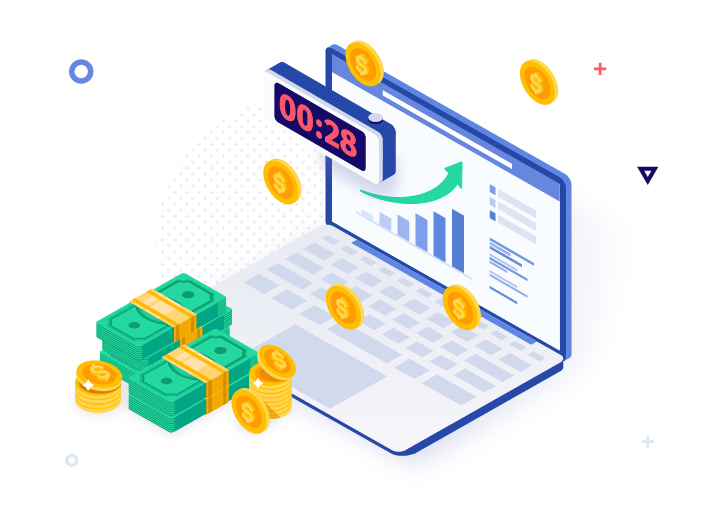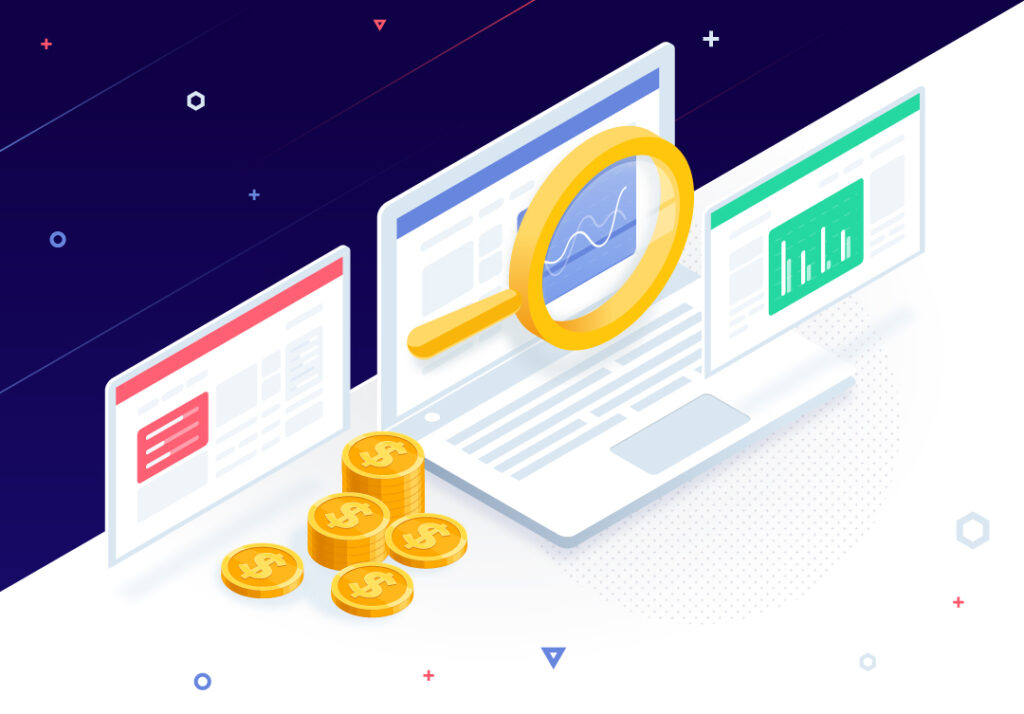Contents
Zeropark Glossary: What are RON, Domain Redirect, Postback URL and Other Affiliate Marketing Terms?
•
Affiliate marketing terms (like RON, Domain Redirect, Postback URL) take some getting used to as plenty of them aren’t self-explanatory. We previously brought you the guide to cost models as well as a rundown of affiliate marketing verticals. Today we want to make sure that once you have topped up your Zeropark account, you can make the most out of your credit without running across confusion.
Welcome to the Zeropark Affiliate Marketing Glossary!
TRAFFIC TYPE
Zeropark currently supports three traffic types (ad formats) plus a variation of one of the traffic types. This is the way publishers will serve the impressions of your ads to their audiences.
DOMAIN (Domain Redirects) – This is short for domain redirect traffic. When a user types in a URL of a parked domain (for example by misspelling), and it belongs to one of our publishers, they will get redirected to your landing page.
PREMIUM PPV (Pop Ads) – Pop traffic can assume the form of pop ups and pop unders. Meaning, your destination page will display either as a new window/tab on top of a currently browsed tab or beneath it. Pop ads are triggered automatically by our publishers’ websites or toolbars/extensions installed by users.
PUSH (Push Ads) – In other words, web push notification traffic. These are the short, clickable messages delivered directly to users’ devices (desktop and mobile) in the form of a notification. When clicked, they open your destination URL in the browser.
IN-PAGE PUSH (Push Ads) – An in-page push ad is actually a banner ad that only imitates a push ad. They are displayed on websites and independent of the device the user is using, hence, they allow iPhone and iPad in mobile iOS targeting.
CAMPAIGN TARGETING OPTIONS
Affiliate marketing campaign targeting options give you a broad choice of targeting methods before you narrow down your audiences.
RON (Run-of-Network) – RON campaigns let you buy traffic from all the sources within one geo (e.g. country), taking into account your targeting settings.
KEYWORD – Running Domain keyword campaigns lets you align your ads with the content of the website they will appear on. For Pop traffic, these keywords either are tied to the content of the site (including the meta tags) or are simply the URL of the website serving the ads.
TARGET/SOURCE – A source is basically all the traffic from one publisher, while a target is a particular website of a publisher. This division exists, because publishers often have more than one website they are looking to monetize. With target/source campaigns you can run whitelist campaigns only on particular targets or the entire sources. You can also specify custom bids for each target/source and pause individual targets/sources. Such options let you easily fine-tune the efficiency of your ads and scale up your affiliate marketing efforts.
PREMIUM TARGETS – If you decide to run precise Target/Source affiliate marketing campaigns in Zeropark, you can upload a list of premium targets for your campaign to buy traffic from. Those premium targets are the ones that usually bring higher than average conversion rates and belong to popular, trusted publishers.
SELECTED TARGETS – As with the premium targets, you can load a list of selected targets, which are the websites that currently bring highly converting traffic. Selected targets traffic bucket consists of websites with proven performance in the last 7 days. The list is continually updated.
MULTI-GEO – Long story short, Multi-Geo campaigns are like RON campaigns but for multiple geos. For instance, you can get all the traffic from the US and Canada.
Granular targeting options
All of the above campaign targeting options have more granular filters underneath. You can not only choose the country but also the regions and even cities. In the case of push traffic, you can also choose to deliver ads only to users with a certain language set on their devices. That ensures that your ad campaign will only reach the users that can actually understand it.
Additional targeting options include devices, device OSes, OS version, browsers, and carriers.

INVENTORY TYPE
Depending on your goals, Zeropark gives you a choice of traffic quality.
PREMIUM – This is the recommended traffic. It’s high-quality, filtered, and approved traffic at competitive bids.
STANDARD – Standard, RON traffic at lower bids.
TRAFFIC BUYING
There are a few terms we use in Zeropark to refer to traffic buying.
BID – Bid is the most basic term when it comes to traffic buying. This is the average rate you’re willing to pay for an impression or a click (more on that very soon). If your bid will be too low, you will either limit the amount of traffic you buy or not buy any traffic at all.
CPV (Cost Per View) – There are two pricing models that you can find on Zeropark. CPV is cost per view, which means that you’re paying for each impression. You can run CPV campaigns for Pop and Domain traffic.
CPC (Cost Per Click) – The other of two pricing models in Zeropark is CPC – Cost Per Click. It’s applicable only for Push traffic. In this case, you’re not paying for ads unless users interact with them.
TRAFFIC BUYING MODEL – When setting up a campaign you can determine whether you want to buy all the traffic that is available at a given moment or take it slow and spend your money smoothly.
DAILY BUDGET – Determine the cap of your daily spending.
CAMPAIGN BUDGET – Cap your campaign spend at a certain amount.
TARGETS DAILY BUDGET – Limit the money you spend daily on each target.
SOURCES DAILY BUDGET – Limit the daily spend on each source.
CAMPAIGN SETTINGS
There’s a bunch of settings you can apply to your campaigns. Let’s go over those which may require a little explanation
FREQUENCY FILTER – Determines the time that has to elapse before a unique visitor sees your ad again. The default setting is 30 minutes, but you can also turn it off completely or set it at 5 minutes, 15 minutes, 1 hour, 3 hours, 6 hours, 12 hours, or 24 hours. The higher the value, however, the less total traffic you will buy.
ADULT FILTERING – This setting dictates whether your ads will display on adult sites only, non-adult sites only, or on both.
DAY PARTING – Dayparting lets you run your campaigns only in specified time windows. You can tick (off) certain days and hours according to a timezone of your choice. When the boxes responding to given hours or days are ticked, your campaign will be buying traffic.
DESTINATION URL – Arguably the most important thing in the setup. This is the field where you input the URL of the site you’re promoting, whether you’re using a landing page or going with direct offer linking. In other words, this is the site that will load on your ad recipient’s screen.
CONVERSION CAPPING – If you’re passing on the conversion data you’ll have the option to enable conversion capping. Some offers and affiliate networks set a limit on how many conversions they accept per day and switching on the conversion capping makes sure affiliate marketers don’t overpay for unwanted conversions.
TRACKING TOKENS
To make the most of your campaigns you can use tokens (a.k.a. custom variables) in your destination URL that allow you to track some of the attributes. Let’s go over the supported tokens.
{cid} – Click ID – identifies the visitor.
{target} – identifies the particular site the visit comes from.
{source} – identifies the publisher the visit comes from.
{keyword} – identifies the keywords assigned to a visitor.
{match} -Sends the exact keyword that brought the visit (keyword campaigns only).
{traffic_type} – sends information about traffic type: pop, domain, push.
{push_type} – sends information about push traffic type: CLASSIC/IN-PAGE
{geo} – sends the country code.
{visitor_type} -Sends information whether visitor is Adult/Non-Adult.
{campaign_id} – identifies the campaign by a numeric campaign ID.
{long_campaign_id} – Sends UUID campaign ID, a long string of numbers and letters.
{campaign_name} – identifies the name of the campaign.
{os} – identifies the Operating System.
{browser} – identifies the browser.
{carrier} – identifies the mobile carrier.
{device_id} – enables you to track a particular device ID if provided by publisher.
TRACKING
Tracking your campaigns isn’t obligatory, but it’s an essential part of the job if you want to be successful in performance marketing. A campaign tracker lets you monitor various aspects of your campaigns, and provides insight so you can easily optimize them for a higher profit.
An aspiring affiliate marketer might skip on using a tracker but this is something that leads to a lot of beginners quitting. Tracking software is not essential but it’s the first tool you should get if you’re eager to see the results. Making choices based on the gathered data is really the gist of affiliate marketing regardless of what’s your marketing strategy.
A tracking platform is the first affiliate software you should invest in if you want to have full control over your ad revenue.
POSTBACK URL – This is the unique URL generated by your Zeropark account. Copy it and paste it into your tracker or affiliate network/affiliate program.
Find out what are the best affiliate trackers in 2021.

REPORTING
You need to monitor your ads’ performance to be able to optimize them and get better results. Here we go with some explanations of some of the affiliate marketing terms you can find in Zeropark’s dashboard.
GEO – This is the country you are running your campaign in.
REDIRECTS – This shows the total number of visits to your destination URL resulting from running ads in Zeropark.
SPENT – Shows how much you spent on your ads.
CONV – Shows the total number of conversions your ads brought you.
PAYOUT – This shows how much money you made with your ads. The payout can be passed dynamically in the postback URL or can be set up manually for all conversions for a particular campaign.
eCPA – This is the calculation that tells you how much money does it take for your campaign to acquire a conversion.
VISIBILITY – This status bar shows you how competitive your bid is. To increase your visibility, bid up on your campaigns.
BP (Bid Position) – An estimate of your bid position for a given target compared to other advertisers within Zeropark. 1 means you’re the top bidder.
ROI – Shows you what is your Return On Investment on any given ad campaign, source, or target.
There are other common affiliate marketing terms that don’t appear in Zeropark but are present in affiliate networks and in a tracking software.
CTR (Click Through Rate) – Click-through rate is one of the most important terms in affiliate marketing as it’s a measurement of your ad/landing page’s performance. Click-through rate measures how many people click on your ads or landers so it is actually a simple assessment of how engaging your ad is.
CR (Conversion Rate) – The conversion rate measures how many people complete the action that is the goal of your campaign. That action can be a sale, a form completion, signup, or an install. It is the affiliate network or affiliate program that specifies what counts as a conversion. Conversion rate is also one of the most important terms in the affiliate marketing industry.
Learn about the top metrics in affiliate marketing.

OPTIMIZATION
There’s no success in performance marketing without optimizing your campaigns. Here’s what Zeropark offers in this area.
RBO (Rule-Based Optimization) – It’s a feature that automates the campaign optimization with a set of if/then rules. Whenever your criteria are met, your campaign will immediately take action for you. For instance, if a target or a source surpasses a certain number of conversions, it can be set to automatically bid up, so you can scale up.
CONVERSION DELAY – Within RBO, you can specify the conversion delay. As conversions often aren’t attributed instantly, you can extend the conversion window so the RBO algorithms wait additional time before taking action.
CUSTOM BIDS – You can specify a custom bid for each target and source in RON and Target/Source campaigns. Increase the bids on the targets/sources that bring you good results. Lower the bids on underperforming ones.
MOBILE BROWSER BLOCKING – For mobile-only Pop and Domain campaigns it is possible to pause traffic coming from particular browsers, just like you pause targets/sources. It’s an excellent option to optimize your mobile campaigns.
Other affiliate marketing terms
The affiliate marketing lingo we discussed above is specific to the Zeropark platform and can be helpful for any ad networks that work on the PPC price model (from smaller platforms to Google Adwords). Of course, some of them have more (or less) ad formats and different optimization and targeting capabilities. Either way, media buyers can use a wider variety of affiliate marketing activities so it’s important to know the basics of more general terminology.
Search Engine Optimization Terms
Apart from affiliate marketing using ad exchange platforms, there are other types of marketing. For example, search engine marketing. This term refers to obtaining website traffic by promoting your site through a search engine.
SEO (Search Engine Optimization) – this is a term describing activities that a website owner can take to increase their website visibility among the search engine results. This is only a part of search engine marketing and entails mostly changes that can’t be immediately measured, such as, keyword research and optimization, creating unique content, or optimizing web pages through the underlying code for the fastest website loading time.
SEA (Search Engine Advertising) – this is another part of search engine marketing that works together with search engine optimization. Search engine advertising is not only running paid search ads to take the top spot in Google’s search engine results but also using more niche marketing techniques and other ad formats provided by the popular search engines, e.g. a banner ad.
Read about the best Search Engine Optimization tips for your affiliate marketing campaigns.

Conclusions
Zeropark’s affiliate marketing glossary includes the most important terms that every beginner affiliate marketer should know. Regardless of the chosen affiliate network, affiliate program, tracking method, ad network, or a specific market segment, this was a list of basic terms that can help you understand the process and achieve a higher conversion rate.
After reading this guide, we hope you’ll no longer feel confused by the affiliate marketing lingo. So hopefully, next time your picking new affiliate software, you know exactly what’s what.
Looking to test your knowledge?
LOG IN TO ZEROPARK




